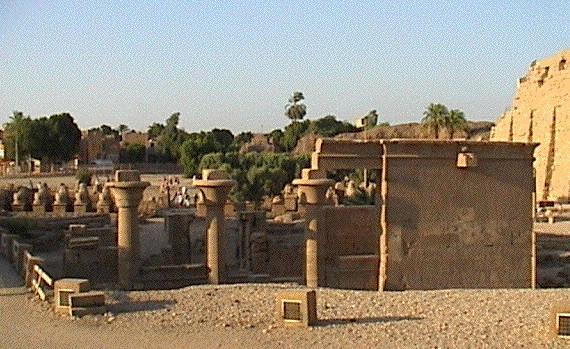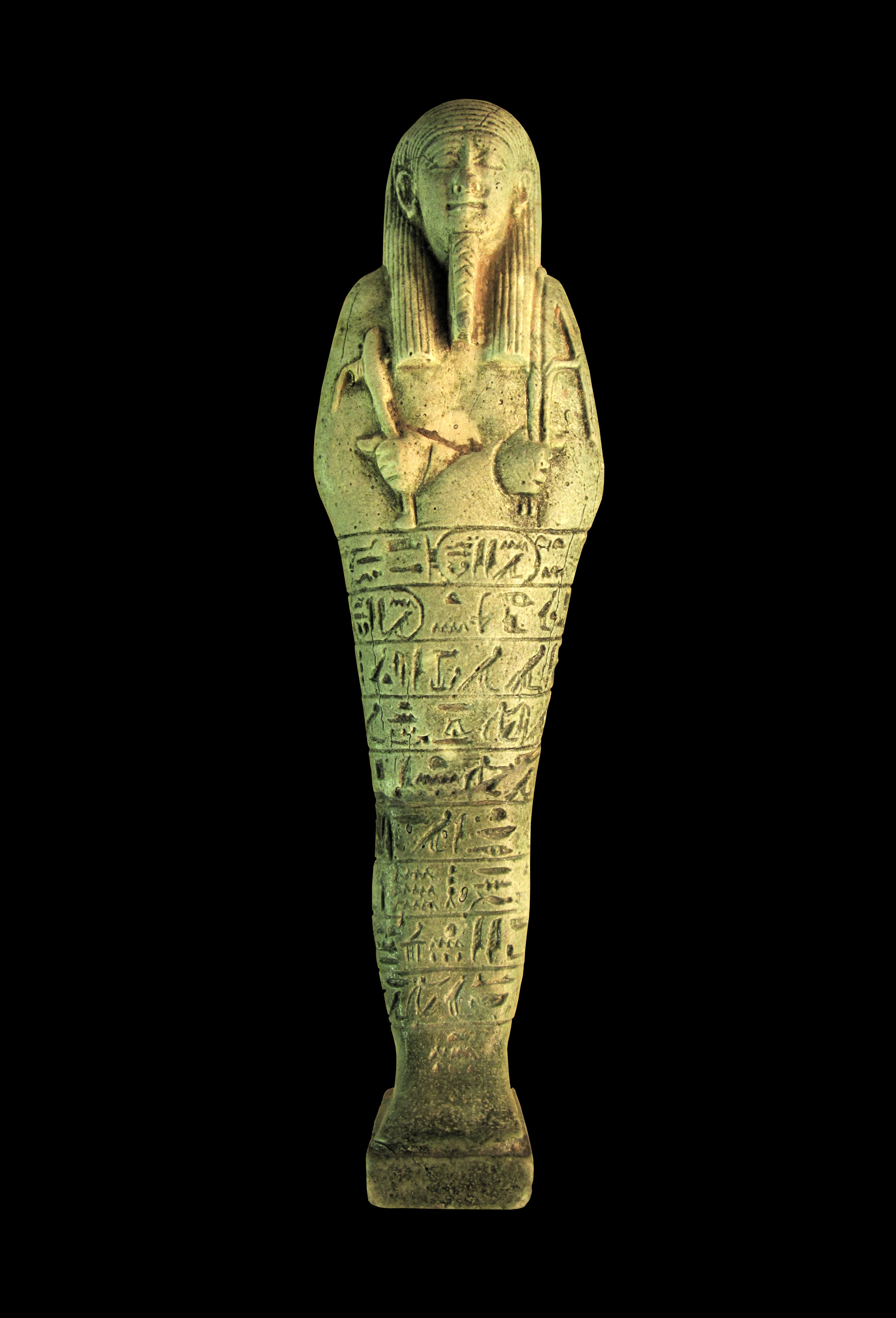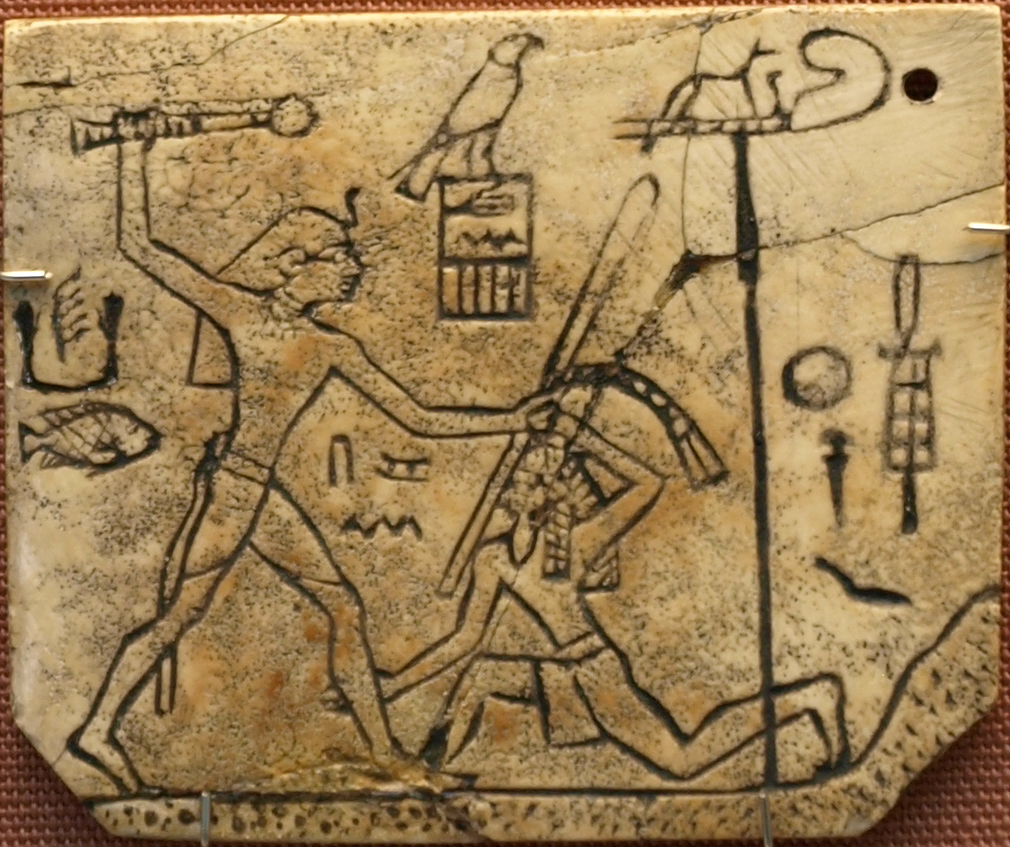|
Psammuthes
Psammuthes or Psammuthis,Ray, J. D., 1986: "Psammuthis and Hakoris", ''The Journal of Egyptian Archaeology'', 72: 149-158. was a pharaoh of the Twenty-ninth Dynasty of Egypt during 392/1 BC. Biography The place of this king in the dynasty is a matter of debate. Although he is mentioned in three different epitomes of Manetho's ''Aegyptiaca'' (Africanus, Eusebius and the Armenian version of the latter) and in the ''Demotic Chronicle'', the sequence of kings is different among these sources and it is unclear if Psammuthes succeeded Hakor, or vice versa. According to a hypothesis of the Egyptologist John D. Ray, upon the death of Nepherites I in 393 BC, the throne passed to his son and successor, which is likely to had been Hakor. However, it seems that in his Year 2 a usurper, Psammuthes (a hellenized form of the Egyptian name PasherienmutPeter Clayton, ''Chronicle of the Pharaohs'', Thames and Hudson Ltd. 1994 p.203), seized power and deposed Hakor, while proclaiming himself pharaoh ... [...More Info...] [...Related Items...] OR: [Wikipedia] [Google] [Baidu] |
Hakor
Hakor or Hagar, also known by the hellenized forms Achoris or Hakoris, was an ancient Egyptian pharaoh of the 29th Dynasty. His reign marks the apex of this feeble and short-lived dynasty, having ruled for 13 years – more than half of its entire duration. Reign Struggle for the accession Hakor's accession and relationships with his predecessor Nepherites I were long debated. After Nepherites' death a dynastic struggle did seem to have occurred, and the throne was claimed by two or maybe three pretenders: Hakor, Psammuthes, and possibly a phantom figure called Muthis who was only mentioned in Eusebius' epitome of Manetho's ''Aegyptiaca''. As a result, Hakor was alternately considered Nepherites' legitimate successor or an unrelated usurper. In 1986, John D. Ray suggested that Hakor was Nepherites' heir, who ruled undisturbed until his Year 2 when he was deposed by Psammuthes. After another year, Hakor managed to retake his legitimate throne by overthrowing the usurper, and cont ... [...More Info...] [...Related Items...] OR: [Wikipedia] [Google] [Baidu] |
Twenty-ninth Dynasty Of Egypt
The Twenty-ninth Dynasty of Egypt (notated Dynasty XXIX, alternatively 29th Dynasty or Dynasty 29) is usually classified as the fourth Dynasty of the Ancient Egyptian Late Period. It was founded after the overthrow of Amyrtaeus, the only Pharaoh of the 28th Dynasty, by Nefaarud I in 398 BC, and disestablished upon the overthrow of Nefaarud II in 380 BC. History Nefaarud I founded the 29th Dynasty (according to an account preserved in a papyrus in the Brooklyn Museum) by defeating Amyrtaeus in open battle, and later putting him to death at Memphis. Nefaarud then made Mendes his capital. On Nefaarud's death, two rival factions fought for the throne: one behind his son Muthis, and the other supporting a usurper Psammuthes; although Psammuthes was successful, he only managed to reign for a year. Psammuthes was overthrown by Hakor, who claimed to be the grandson of Nefaarud I. He successfully resisted Persian attempts to reconquer Egypt, drawing support from Athens (until the ... [...More Info...] [...Related Items...] OR: [Wikipedia] [Google] [Baidu] |
Twenty-ninth Dynasty Of Egypt
The Twenty-ninth Dynasty of Egypt (notated Dynasty XXIX, alternatively 29th Dynasty or Dynasty 29) is usually classified as the fourth Dynasty of the Ancient Egyptian Late Period. It was founded after the overthrow of Amyrtaeus, the only Pharaoh of the 28th Dynasty, by Nefaarud I in 398 BC, and disestablished upon the overthrow of Nefaarud II in 380 BC. History Nefaarud I founded the 29th Dynasty (according to an account preserved in a papyrus in the Brooklyn Museum) by defeating Amyrtaeus in open battle, and later putting him to death at Memphis. Nefaarud then made Mendes his capital. On Nefaarud's death, two rival factions fought for the throne: one behind his son Muthis, and the other supporting a usurper Psammuthes; although Psammuthes was successful, he only managed to reign for a year. Psammuthes was overthrown by Hakor, who claimed to be the grandson of Nefaarud I. He successfully resisted Persian attempts to reconquer Egypt, drawing support from Athens (until the ... [...More Info...] [...Related Items...] OR: [Wikipedia] [Google] [Baidu] |
Muthis
Muthis may have been an ephemeral ancient Egyptian pharaoh of the Twenty-ninth Dynasty of Egypt, Twenty-ninth Dynasty. Biography He is sometime reported as a son of Nepherites I who ruled for a brief time before being deposed by an usurper, Psammuthes. However, this statement is based on an interpretation of a passage in the Demotic Chronicle: His son (i.e. of Nepherites I) was allowed to succeed him. (But) a short time was vouchsafed to him... Nevertheless, the Demotic Chronicle never mentions the name of Muthis and, as pointed out by the Egyptologist John D. Ray, "his son" could be a reference to Hakor instead. It is also possible that Muthis was a very shadowly usurper, maybe related to the other usurper Psammuthes. Another option is that "Muthis" was simply a copying error, and therefore never existed; the latter hypothesis is supported by the fact that the name is clearly hellenization, hellenized but there are no clues of what could have originally meant "Muthis" in Egyptia ... [...More Info...] [...Related Items...] OR: [Wikipedia] [Google] [Baidu] |
Nepherites I
Nefaarud I or Nayfaurud I, better known with his hellenised name Nepherites I, was an ancient Egyptian pharaoh, the founder of the 29th Dynasty in 399 BC. Reign Accession It is believed that Nepherites was a general from the deltaic city of Mendes who, in the autumn of 399 BC, rose against pharaoh Amyrtaeus, defeated him in open battle, and then executed him at Memphis. Nepherites then crowned himself pharaoh at Memphis and possibly also at Sais, before shifting the capital from Sais to his hometown Mendes. The fact that Nepherites I chose the same Horus name of Psamtik I and the Golden Horus name of Amasis II – both relevant rulers of the earlier 26th Dynasty - is thought to demonstrate that he wanted to associate his rule with an earlier 'golden age' of Egyptian history. Activities According to Manetho, Nepherites I ruled for six years, although his highest archaeologically attested date is his regnal year 4. Evidence of Nepherites' building work has been found in a number ... [...More Info...] [...Related Items...] OR: [Wikipedia] [Google] [Baidu] |
Bronze
Bronze is an alloy consisting primarily of copper, commonly with about 12–12.5% tin and often with the addition of other metals (including aluminium, manganese, nickel, or zinc) and sometimes non-metals, such as phosphorus, or metalloids such as arsenic or silicon. These additions produce a range of alloys that may be harder than copper alone, or have other useful properties, such as ultimate tensile strength, strength, ductility, or machinability. The three-age system, archaeological period in which bronze was the hardest metal in widespread use is known as the Bronze Age. The beginning of the Bronze Age in western Eurasia and India is conventionally dated to the mid-4th millennium BCE (~3500 BCE), and to the early 2nd millennium BCE in China; elsewhere it gradually spread across regions. The Bronze Age was followed by the Iron Age starting from about 1300 BCE and reaching most of Eurasia by about 500 BCE, although bronze continued to be much more widely used than it is in mod ... [...More Info...] [...Related Items...] OR: [Wikipedia] [Google] [Baidu] |
Pharaohs Of The Twenty-ninth Dynasty Of Egypt
Pharaoh (, ; Egyptian: ''pr ꜥꜣ''; cop, , Pǝrro; Biblical Hebrew: ''Parʿō'') is the vernacular term often used by modern authors for the kings of ancient Egypt who ruled as monarchs from the First Dynasty (c. 3150 BC) until the annexation of Egypt by the Roman Empire in 30 BC. However, regardless of gender, "king" was the term used most frequently by the ancient Egyptians for their monarchs through the middle of the Eighteenth Dynasty during the New Kingdom. The term "pharaoh" was not used contemporaneously for a ruler until a possible reference to Merneptah, c. 1210 BC during the Nineteenth Dynasty, nor consistently used until the decline and instability that began with the Twenty-Fifth Dynasty. In the early dynasties, ancient Egyptian kings had as many as three titles: the Horus, the Sedge and Bee ( ''nswt-bjtj''), and the Two Ladies or Nebty ( ''nbtj'') name. The Golden Horus and the nomen and prenomen titles were added later. In Egyptian society, relig ... [...More Info...] [...Related Items...] OR: [Wikipedia] [Google] [Baidu] |
4th-century BC Pharaohs
The 4th century (per the Julian calendar and Anno Domini/Common era) was the time period which lasted from 301 ( CCCI) through 400 ( CD). In the West, the early part of the century was shaped by Constantine the Great, who became the first Roman emperor to adopt Christianity. Gaining sole reign of the empire, he is also noted for re-establishing a single imperial capital, choosing the site of ancient Byzantium in 330 (over the current capitals, which had effectively been changed by Diocletian's reforms to Milan in the West, and Nicomedeia in the East) to build the city soon called Nova Roma (New Rome); it was later renamed Constantinople in his honor. The last emperor to control both the eastern and western halves of the empire was Theodosius I. As the century progressed after his death, it became increasingly apparent that the empire had changed in many ways since the time of Augustus. The two emperor system originally established by Diocletian in the previous century fell int ... [...More Info...] [...Related Items...] OR: [Wikipedia] [Google] [Baidu] |
Pharaoh
Pharaoh (, ; Egyptian: ''pr ꜥꜣ''; cop, , Pǝrro; Biblical Hebrew: ''Parʿō'') is the vernacular term often used by modern authors for the kings of ancient Egypt who ruled as monarchs from the First Dynasty (c. 3150 BC) until the annexation of Egypt by the Roman Empire in 30 BC. However, regardless of gender, "king" was the term used most frequently by the ancient Egyptians for their monarchs through the middle of the Eighteenth Dynasty during the New Kingdom. The term "pharaoh" was not used contemporaneously for a ruler until a possible reference to Merneptah, c. 1210 BC during the Nineteenth Dynasty, nor consistently used until the decline and instability that began with the Twenty-Fifth Dynasty. In the early dynasties, ancient Egyptian kings had as many as three titles: the Horus, the Sedge and Bee ( ''nswt-bjtj''), and the Two Ladies or Nebty ( ''nbtj'') name. The Golden Horus and the nomen and prenomen titles were added later. In Egyptian society, religio ... [...More Info...] [...Related Items...] OR: [Wikipedia] [Google] [Baidu] |
Karnak
The Karnak Temple Complex, commonly known as Karnak (, which was originally derived from ar, خورنق ''Khurnaq'' "fortified village"), comprises a vast mix of decayed temples, pylons, chapels, and other buildings near Luxor, Egypt. Construction at the complex began during the reign of Senusret I (reigned 1971–1926 BCE) in the Middle Kingdom (around 2000–1700 BCE) and continued into the Ptolemaic Kingdom (305–30 BCE), although most of the extant buildings date from the New Kingdom. The area around Karnak was the ancient Egyptian ''Ipet-isut'' ("The Most Selected of Places") and the main place of worship of the 18th Dynastic Theban Triad, with the god Amun as its head. It is part of the monumental city of Thebes, and in 1979 it was inscribed on the UNESCO World Heritage List along with the rest of the city. The Karnak complex gives its name to the nearby, and partly surrounded, modern village of El-Karnak, north of Luxor. Overview The complex is a vast open site an ... [...More Info...] [...Related Items...] OR: [Wikipedia] [Google] [Baidu] |
Thebes, Egypt
, image = Decorated pillars of the temple at Karnac, Thebes, Egypt. Co Wellcome V0049316.jpg , alt = , caption = Pillars of the Great Hypostyle Hall, in ''The Holy Land, Syria, Idumea, Arabia, Egypt, and Nubia'' , map_type = Egypt , map_alt = , map_size = , relief = yes , coordinates = , location = Luxor, Luxor Governorate, Egypt , region = Upper Egypt , type = Settlement , part_of = , length = , width = , area = , height = , builder = , material = , built = , abandoned = , epochs = , cultures = , dependency_of = , occupants = , event = , excavations = , archaeologists = , condition = , ownership = , management = , public_access = , website = , notes = , designation1 = WHS , designation1_offname = Ancient Th ... [...More Info...] [...Related Items...] OR: [Wikipedia] [Google] [Baidu] |
Akhmim
Akhmim ( ar, أخميم, ; Akhmimic , ; Sahidic/Bohairic cop, ) is a city in the Sohag Governorate of Upper Egypt. Referred to by the ancient Greeks as Khemmis or Chemmis ( grc, Χέμμις) and Panopolis ( grc, Πανὸς πόλις and Πανόπολις), it is located on the east bank of the Nile, to the northeast of Sohag. History Akhmim was known in Ancient Egypt as Ipu, Apu (according to Brugsch the name is related to the nearby village of Kafr Abou) or Khent-min. It was the capital of the ninth (Chemmite) nome of Upper Egypt. The city is a suggested hometown for Yuya, the official of Tuthmosis IV and Amenhotep III. The ithyphallic Min (whom the Greeks identified with Pan) was worshipped here as "the strong Horus." Herodotus mentions the temple dedicated to Perseus and asserts that Chemmis was remarkable for the celebration of games in honor of that hero, after the manner of the Greeks, at which prizes were given; as a matter of fact some representations are ... [...More Info...] [...Related Items...] OR: [Wikipedia] [Google] [Baidu] |











